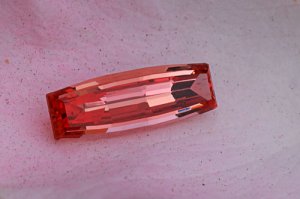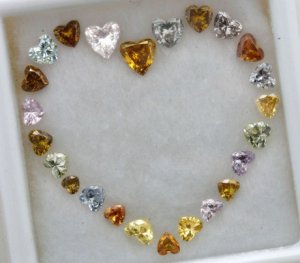zeolite
Brilliant_Rock
- Joined
- Aug 13, 2008
- Messages
- 619
This will be a rambling series in response to “what do you dislike?” This is not to criticize anyone’s tastes or preferences. It will just show examples that might change your mind.
Topaz is commonly found all over the world. Almost always, the color is so pale, that it is better to call it an off white. It is commonly pastel blue, green or yellow. The intense blues in the gem market are natural topaz that has been irradiated and heated. Only in a rare two square mile area or so, in Ouro Preto Brazil, does natural topaz attain more intense colors. Pakistan also produces tiny amounts of pink and peach topaz.
The finest topaz from Ouro Preto can show some combination of pink, orange or red. These intense examples are called imperial topaz. The name came from some intense topaz that was found, and depleted, in Russia at the end of the 19th century. It was reserved only for the Russian Tsar and his family.
The finest imperial topaz is a fabulous gemstone, is exceedingly rare, and can surpass $2,000/ct, wholesale. While some malaia garnets can resemble imperial topaz, these garnets never attain the intense color of imperial topaz. When fine malaias (and I have several) are placed next to a top imperial topaz, the brown in the garnet (not obvious before), is instantly seen in comparison.
Topaz is quite hard and takes a wonderful polish. It appears much more brilliant than its relative low refractive index would suggest.
The gem below is 5.00 cts, in a step barrel cut. It is pictured on a pastel rose petal, shading from pink to white. This mimics the dichroism of imperial topaz, with the most intense color showing on the ends of the gem.

















300x240.png)